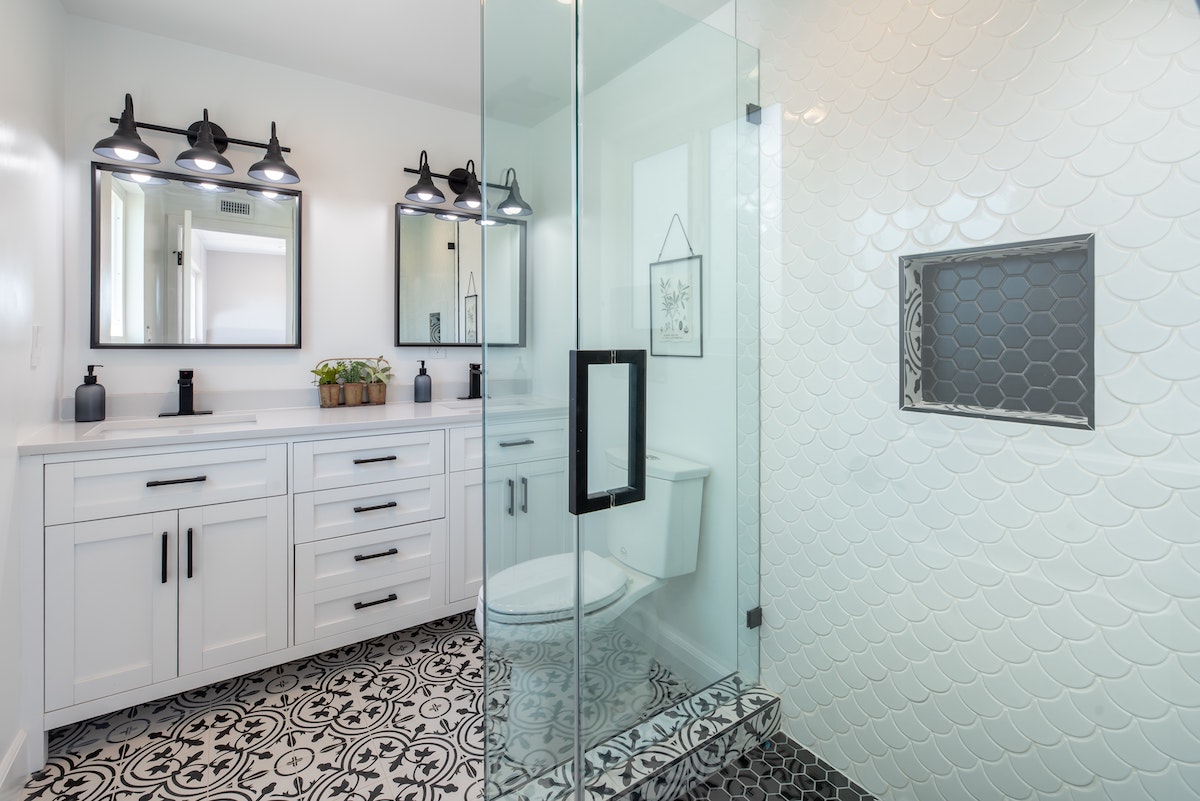St. Louis homeowners remodel their bathrooms more so than any other room, even their kitchens. That’s because the space is smaller sized, making the task much easier which in turn lowers the costs for floor covering and paint, cabinets and counter top. These 9 bathroom remodeling tips will help you make your bathroom remodel more pleasing while making the process go smoothly and efficiently, and keeping the job cost-effective.
Select the Right Flooring
From a totally practical standpoint, solid wood floors, while giving a room terrific ambience, are not the best kind of floor covering for bathrooms. Bathroom floor coverings need to be able to stand up against potential wetness and abuse of everyday use. Better choices for bathroom floor coverings consist of ceramic and porcelain tile, vinyl plank, vinyl tiles, and sheet vinyl flooring.
Modify the Bathroom Size With Color
To make a bathroom look larger, make sure you stick to the white-or-light color palette. Dark colors will make a room feel smaller. Painting your bathroom ceiling any color but white or off-white will also make the space look and feel smaller.
Use Built-ins For More Room
Using built-ins, such as recessed medicine cabinets, soap holders, and even toilet paper holders will ferret out as much readily available space as possible from small bathrooms. You can even gain more overhead room by converting your ceiling light into a recessed light.
Adequate Bathroom Ventilation
By building code, all bathrooms require some form of ventilation either in the form of a window or a bathroom exhaust fan. For bathroom fans, it is important to look at both their exhaust capability (or how many cubic feet of air per minute they can move) and also their noise levels.
Add Decorative Freestanding Furniture
If there is room, the trend is to have one freestanding decorative piece in the bathroom such as a chair or cabinet. This decorative piece can serve a practical use such as a place to for extra towels and linens, soaps, lotions, cleaning supplies or other bathroom items.
Include Hooks to Hang Things
Hooks are the simplest way to add surface area to a bathroom. Hooks can be used for clothes, bathrobes, or towels. Locate hooks on the back of the door, on the side of cabinets, or on unused sections of walls.
Safeguard the Walls
It is extremely important to protect the lower section of the walls from the inevitable splashes of water that occur in bathrooms from the tub, shower or sink. Consider using beadboard or tile wainscot on the bottom 40 to 48 inches of the wall. A good coat of oil-based paint ensures that the beadboard will be practically impervious to moisture. Tile, too, serves the very same purpose of protecting the walls against moisture, and it has a large variety of design possibilities.
Bright Lighting Is Important
A bathroom is a place where lighting matter. People tend to look at themselves more closely in a bathroom and need bright lighting to help accommodate that. Along with an overhead light, consider adding lighting above or on the sides of the bathroom mirror. A dimmer switch on the lighting fixtures can be handy when more softer light is needed.
Mirrors are a Must in the Bathroom
Mirrors in bathrooms can be used for more than just the purpose of checking makeup or hair. Think about mirrors in bathrooms as design components that can visually expand a small bathroom and add light to the space. Consider adding a 2nd mirror in addition to the mirror that is usually situated above the sink.
